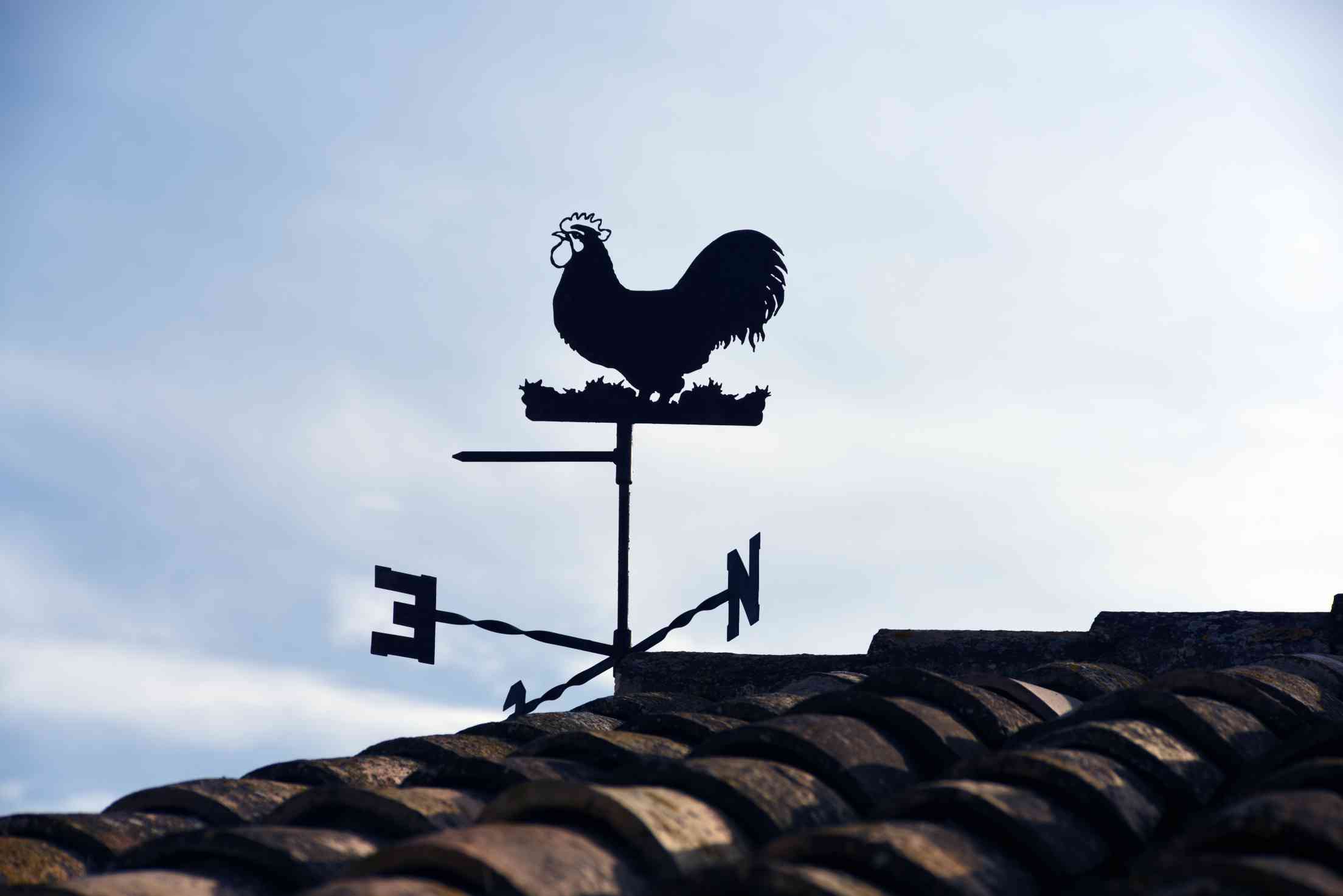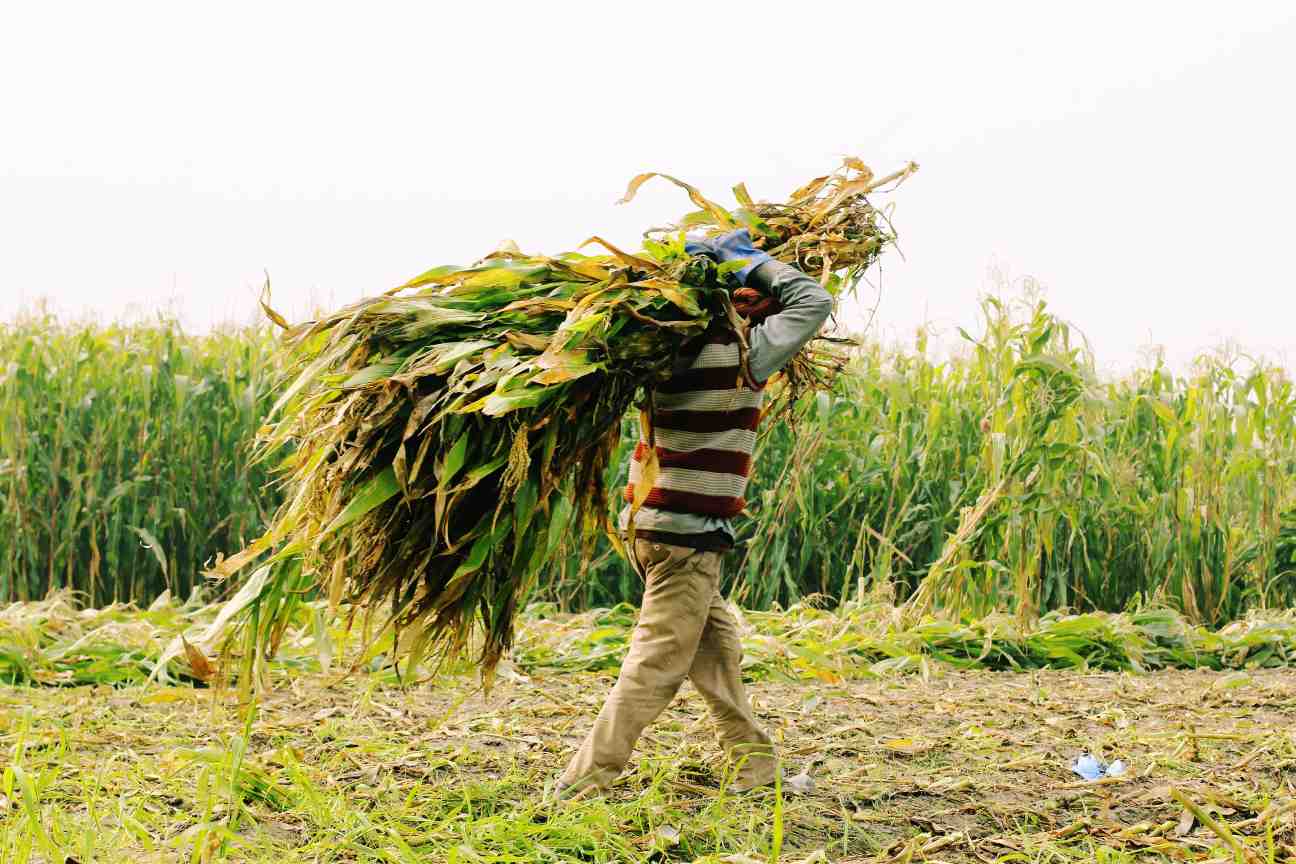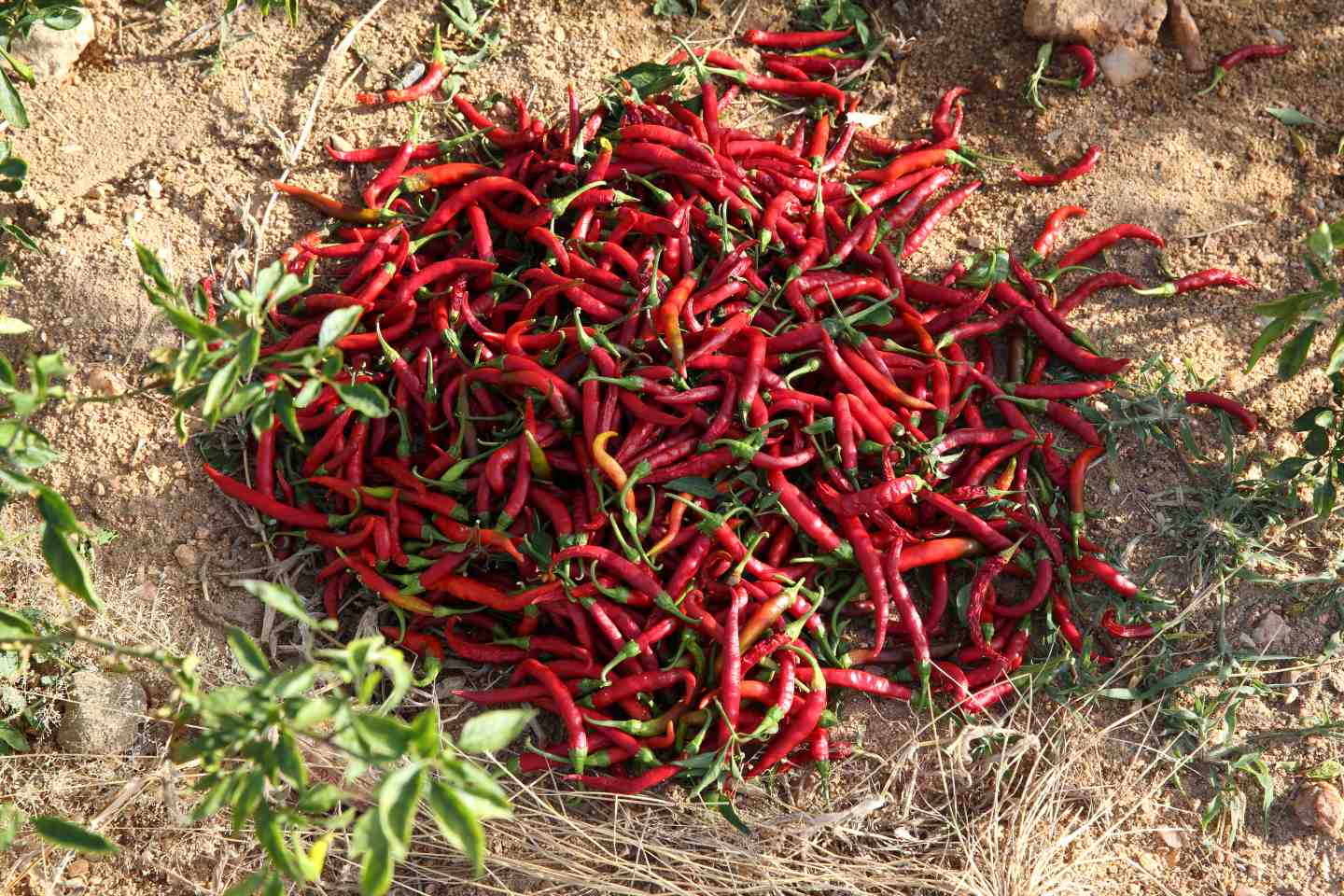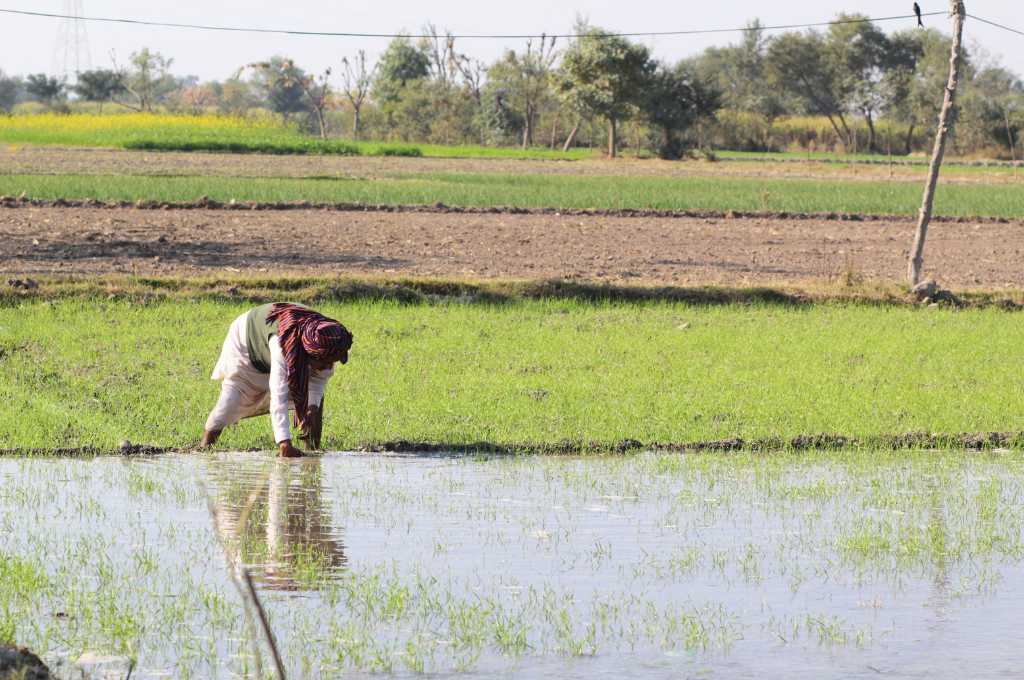Edited transcript of the episode:
00:54
Sneha: Today I’m in conversation with Bharat Bhushan and Deo Datt Singh—two civil society leaders belonging to different generations—both of whom have witnessed India’s changing agricultural landscape at different points in time.
Bharat Bhushan is the chief functionary and one of the founders of People’s Action for National Integration (PANI), a nonprofit working with marginalised communities in Uttar Pradesh. Bharatji has been actively involved in social change movements from a very young age and has vast experience in implementing integrated development programmes in rural India.
Deo Datt Singh is an agri-business expert. He is the director of operations at PANI, where he brings in several decades of experience in leading and managing development projects. Deoji’s areas of expertise include ecological farming, climate change, rural economic development, and agri-business development.
Today, we’re going to be speaking about India’s ever-evolving relationship with agriculture. We know that agriculture plays a vital role in India’s development story, be it in terms of the livelihoods it supports, the food security that it ensures, or its contribution to trade and GDP.
In this episode, Bharatji and Deoji will dip into the past, tell us how we got to where we are today, and also discuss the future of farming—particularly in light of the current threats of climate change, water security, and a generation of young people who no longer aspire to be farmers.
02:39
Sneha: Bharatji, you’ve been deeply involved in rural development for several decades—be it through your participation in social movements or your work at PANI. You’ve also worked closely with farmers and advocated for their rights. And so we could say that you’ve witnessed how agriculture has evolved in our country. Could you tell us about the evolution of agriculture in India?
Bharat: Agriculture has a longstanding history [in India]. It has evolved over a span of 1,100 years. Our scriptures also mention it—we have always been a farmer-based or an agrarian country. However, most of our agriculture was monsoon-dependent during that time. Our production was contingent on the monsoon, without which we would have no harvest and would suffer calamities. This dependence resulted in a huge famine in Bengal in 1943—I’m referring to the pre-Independence era. More than 10 lakh people were affected by the famine.
03:41
Sneha: So we’ve been an agrarian country for centuries. But prior to Independence, we weren’t producing enough to meet our needs. What changed post Independence?
Bharat: Realising the severity of the problem, the government that came into power immediately after Independence decided to prioritise and encourage agriculture first. In order to boost agriculture, they adopted the idea of a green revolution. It was worked upon intensively from the first Five-Year Plan itself, and it progressed slowly. In hindsight, we can infer that India was in a period of starvation till 1950. From 1950–70, we had a shortage of food grains. And we became food sufficient from 1970–2000. We experienced this shift because of the Green Revolution.
We’ve been food secure post 2000. Today, our situation is such that we can export and distribute grains to others. Perhaps this is the reason we’re called an agriculture-based country; no other nation is called a primarily agricultural country, because this is our history. This has been the state of our agriculture in the pre- and post-Independence era.
05:04
Sneha: Thank you, Bharatji, for tracing the evolution of agriculture in India. From a state of near starvation to now being a food-secure nation that exports grains to other countries, we’ve come a long way. And, of course, the policies that the government adopted post Independence have played an important role in this. The Green Revolution in particular was a turning point. And a lot has changed since it was introduced. Deoji, coming to you, since the Green Revolution was initiated in the ‘60s, how has agriculture changed?
Deo Datt: Agriculture has gone through a lot of changes in the past three to four decades. For instance, after the Green Revolution, our [food grain] production increased, making us food sufficient. But this had other consequences and problems as well. We were unable to conserve our environmental resources, especially land and water, in the race to improve our yield. The unrestrained use of chemicals and pesticides damaged our lands. If we look at the statistics with the awareness of the damage caused, they paint a very bleak picture. Our chemical usage per acre of land might be low compared to Japan and the US, but we still have chemical and pesticide residue, posing a substantial concern for us.
The progress of the past four decades compels us to appreciate ourselves, but at the same time, it asks us to re-evaluate our mistakes to avoid repeating them.
Our country and our agriculture could have developed, but perhaps it couldn’t happen to that scale, which I must say is quite unfortunate.
07:10
Sneha: So while the Green Revolution successfully increased the output of our land, it also had other repercussions, and we’re still dealing with them. There is a study, for example, that explores how food grain production in India rose from 82 million tonnes in the late 1960s to 264 million tonnes in 2013–14. That’s a lot. But along with this switch to high-yielding varieties of rice and wheat during the Green Revolution, farmers were also encouraged to use chemicals fertilisers and pesticides to increase their yield. And the persistent use of chemicals over time has led to the degradation of our soil and water.
Agriculture has always played an important role; it is the sole catalyst that can bring a balance to our current population.
Shifting gears slightly, Bharatji, if we talk about the rural economy today, how would you describe the role of agriculture in India’s rural economy?
Bharat: Agriculture has always played an important role; it is the sole catalyst that can bring a balance to our current population. Animal husbandry, milk production, fish production, etc. are all connected to agriculture. There is a visible difference in the rural economy of states where these are worked upon together through an integrated approach. However, this attempt is being made at a very small scale. It has the potential to make a significant contribution to the economy if done in a planned manner by the government.
In rural India, our brothers and sisters who are farmers work together. But the value of their work, and I’m not referring to the monetary value… but the value in terms of the respect that they deserve from society is lacking. And this can be due to many reasons. But if their labour is given that respect, it will help them in creating their own identity and, as a result, enhance their self-respect. And from self-respect, they will be able to move towards self-reliance—to bridge the gap that exists. How this can be achieved in practice is a separate discussion. But if we’re able to do this—give the respect to agriculture that it deserves, then even today, no other industry can bring economic power to our country on the scale that agriculture can. If we weren’t an agricultural country, a country of villages, our situation would have been much worse during the corona period. It is because of agriculture that our government is able to distribute free grains today.
10:04
Sneha: Yes, Bharatji, as you said, during COVID-19, the country would have suffered far more than it did if weren’t for our farmers. And we need to recognise that contribution.
The other interesting thing you said was that the government needs to look at the rural economy as a whole. Now, what this means is that in addition to the focus on agricultural crops, it needs to look at other livelihoods such as animal husbandry, dairy farming, and fish production. An integrated approach to rural development that accounts for these livelihoods can significantly boost our rural economy.
Deoji, we’ve touched upon the role that the government can play. What do you think is the role of the private sector in relation to agriculture and the rural economy?
Deo Datt: The private sector has a major role to play, and it has played it well till now; this cannot be dismissed. We don’t have authentic data but one source states that the number of government extension workers is so low in India that one extension worker has to assist 16,000 farmers. Farmers are able to learn about technologies and practices because of these extension workers. However, it isn’t possible for one worker to support 16,000 farmers. This is where private companies come in. They have reached remote places with their extension workers, and played a major role in the sale of their products—be it seed companies, fertiliser companies, pesticide companies. They have made a major contribution.
Currently, the government is promoting FPOs because they are innovating products. Private companies can play an important role in consolidating and arranging the buy-back of these products. They can help with storage and processing. Rough statistics state that approximately 26 percent of our horticulture products face post-harvest loss. If we can manage to save that 26 percent, our production will effectively be considered 26 percent more. The private sector can play a major role here.
12:35
Sneha: So the private sector has a significant role to play in taking new tools and technologies to farmers. It has also taken seeds, fertilisers, and pesticides to farmer groups.
Deoji, you also mentioned farmer producer organisations, or FPOs—these are groups of farmers that come together to leverage the advantages of collectivising. They pool their resources and therefore reduce their risks and increase incomes.
A major role the private sector can play in the future is in feeding the required research into the agriculture sector to help us tackle the climate change crisis.
What you’re saying is that the private sector can create markets for these farmer collectives and help them store and process agricultural products—something that small farmers typically don’t have the expertise and resources to do.
How else can the private sector help?
Deo Datt: A major role the private sector can play in the future is in feeding the required research into the agriculture sector to help us tackle the climate change crisis. Many private companies innovate their own varieties, chemicals… They have a huge opportunity to invest in climate-change-resilient research. It can become a profitable business for them if they are able to market the research to their customer base.
I’m not saying that private companies should spend all their resources on the country. But they can utilise their resources to help develop agriculture, which can benefit them simultaneously. Such a situation can develop.
15:04
Sneha: So, we’ve been speaking about a few different dimensions of agriculture in India. Is there anything you think our listeners will be surprised to learn when it comes to agriculture? Deoji, coming to you first.
Deo Datt: By 2050, we will have a population of 160 crore. Our current food grain production is 314 million tonnes. We have to grow by four times every year. Only then will we be able to fulfil our requirement of 400 million tonnes by 2050. I’m talking about just India.
15:40
Sneha: So, we have to increase our food grain production fourfold each year for the next three decades to fulfil our requirement of 400 million tonnes by 2050.
Deo Datt: Also, the youth of our nation is making a great contribution. However, they don’t consider agriculture a viable career. So our audience will be surprised to learn that agriculture can in fact be remunerative for young people. Several agriculture-based start-ups have been launched in India and are making great progress. This is a huge opportunity for young people to find employment in agriculture and reform the sector. If you’ve noticed, the government intends to double the [farmer] income. They wish to reduce the use of fertilisers by 20 percent; water use by 25 percent; and methane emission by 45 percent. However, if the youth does not enter this field, then neither the government nor the ageing farmer population is capable of achieving these targets on their own. Young people’s contribution is imperative. I think people might be surprised to learn that agriculture can offer opportunities to the youth.
17:18
Sneha: So there’s a huge opportunity for the youth of our country to find employment in agriculture. And this in turn will help reform the sector, which is crucial if we are to meet these production goals by 2050.
Bharatji, what are your thoughts on this? What will our listeners be surprised to learn about agriculture in India?
Bharat: As I said previously, despite being an agricultural country, the majority of our population does not know what farming is, what it entails, how villages function, and the kind of people that reside in the village and how they live their life. This would be new information for people, which is sad in itself. The point is that they should already be equipped with this knowledge as most of our population resides in villages—despite the widespread urbanisation, 73 percent of our population lives in villages. So everyone needs to know about this 73 percent. The government needs to make efforts towards this, similar to the efforts made for other important issues. For 73 percent of this population, everything is connected to agriculture. If the government tries to make people understand, then they will learn about how important our land is, where we were born, and where we live. People are unaware because the younger generation has no connection with the villages. So when we meet young people, they ask us how villages work. This is shocking for us since we have many universities for agriculture education, but people are still unaware. So this needs to be focused on. I think if this is surprising for me then it’s possible that it will be surprising for others as well.
19:07
Sneha: Yes, it’s surprising that even though we’re an agrarian country with a huge rural population, many of us, especially those who live in cities, don’t know very much about our rural economy.
Keeping all of this in mind, if we think about the future of agriculture through the lenses of food security, water security, and climate change, what needs to change or shift?
Deoji?
Deo Datt: Moving forward, Snehaji, we’ll have to change how we practise agriculture to combat the shifts being brought about by climate change. The government has made a lot of announcements—on organic farming, millet farming, including millets on our plate—all these steps are admirable and the need of the hour. However, we can’t rely on organic farming and use of millets alone to solve for climate change. We need consolidated policies, and we need to figure out their implementation to face this emerging challenge. Various stakeholders need to work together for implementation, be it research institutions, educational institutions, or extension institutions. Because it is important for the farmers and the young generation to possess knowledge of new research through the extension system. That is the first important thing—to make a chain [of knowledge sharing] in order to meet this challenge. Moving forward, we’ll have to focus on our soil health, conserve water, choose less water-intensive crops, and plan our farming as per water availability.
20:55
Sneha: So you’re saying that while organic farming and the focus on millets are important steps towards climate action, they aren’t enough. We need consolidated policies, and various stakeholders have to come together to solve the challenges that confront us.
We also need to think about the health of our soil and how we can conserve water in agricultural processes. Moving forward, farmers will need to choose crops that require less water.
Deo Datt: If I may add—this may sound philosophical—but we need to change our lifestyle. Unless we change our lifestyle… Sitting in North India, why do we want to consume broccoli in the summers? Why do we want to eat cauliflower? Why are we importing fruits from foreign countries? Why are we contributing to carbon emissions? We need to change our lifestyle. We need to turn to agriculture and make it a lifestyle again. Otherwise, if we keep thinking about agriculture as only a profitable venture, we will continue to make the same mistakes we made after the Green Revolution. We need to explore practising agriculture as a lifestyle once again. We can only have a sustainable future and keep our planet secure if we modify our lifestyle. Otherwise, we have a tough road ahead of us.
22:30
Sneha: So, Deoji, you’re saying that we should move beyond thinking about agriculture as a profitable venture or we’ll continue to make the same mistakes we made after the Green Revolution.
Bharatji, what do you think we should be doing moving forward?
Bharat: If you think about it, land distribution is such a small part [of the discussion]. We have land, but it is not distributed equally. We saw the Bhoodan Movement and participated in it—based on the idea Vinobaji had that everyone should possess land. So one important element is how land ownership can become a reality for all. If we wish to change farming, then we need to include small farmers too, not just those who farm on a large scale. Change won’t be possible unless we include everyone.
23:25
Sneha: To give our listeners some context, Vinoba Bhave, a social reformer and freedom fighter, started the Bhoodan Movement in a village in Telangana in 1951. He went from village to village and convinced the landlords to voluntarily donate their land to farmers. He also convinced the government to turn it into a law and distribute land equally, or as per people’s requirement.
Bharat: So the Bhoodan Movement was huge in the country; I was 12 or 13 when I witnessed it myself. My mother and father were part of it. It was a significant programme—not just a programme, it was a movement. The Bhoodan land is available even today, which has been distributed to some, and not to others. So there is still an imbalance. The aim should be to strike a balance and distribute land to all. As Deoji mentioned, we’re focusing on millet and organic farming—even those won’t be accepted unless practised by everyone. Nothing will change if only a few incorporate these. There is a need to adopt an integrated approach.
24:42
Sneha: This has been such an eye-opening conversation. Like you both have said, farming and agriculture in India have come a long way. But there is also an urgent need to reassess where and how we go from here, especially as we deal with the climate crisis.
Short-term thinking can have no place in our plans for agriculture in India. We need to invest in the health of our soil, conserve water and use it efficiently, keep farmers at the forefront of our agrarian policies, and build a future in which young people want to be part of India’s agricultural economy.
Thank you, Bharatji and Deoji, for a wonderful conversation.
—
Read more
- India: Issues and priorities for agriculture
- How agricultural evolution is giving rise to a new futuristic model of farming
- The future of Indian agriculture
- Climate change and Indian agriculture
- Organic farming in India: A vision toward a healthy nation
- Sustainable agriculture: Bringing Indian farmers on board
- Making agriculture viable for small and marginal farmers





